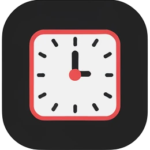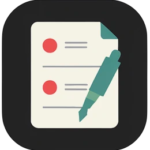TOC
What Are Employee Apps?
Employee apps are digital tools designed to facilitate management and communication within an organization. These apps have become an essential resource for HR managers as they help optimize processes, improve productivity, and foster a more collaborative work environment.
Key Features of Employee Apps
Employee apps typically include a variety of features that can be tailored to the specific needs of each company. Some of the most common features are:
| Feature | Description |
|—————————–|——————————————————————|
| Internal Communication | Facilitate communication between employees and departments. |
| Task Management | Allow assigning and tracking the progress of projects and tasks. |
| Training and Development | Offer resources for training and professional growth. |
| Feedback and Evaluations | Facilitate continuous feedback and performance evaluations. |
Benefits of Implementing Employee Apps
Implementing these tools can bring multiple benefits, both for employees and the organization as a whole. Here are some:
1. Improved Communication: Apps allow information to flow more efficiently, eliminating barriers and reducing misunderstandings.
2. Increased Productivity: By centralizing tasks and resources, employees can focus on what really matters, optimizing their time.
3. Teamwork Promotion: These apps promote collaboration, which can result in a more cohesive and motivating work environment.
4. Real-Time Information Access: Employees can access important data instantly, allowing them to make informed decisions quickly.
Additionally, the use of employee apps can contribute to organizational culture by facilitating the integration of new members and strengthening corporate identity. If you want to delve deeper into the impact of technology in the work environment, you can explore more on the topic in resources about technology in the workplace.
How to Choose the Right App?
Choosing the right app can be challenging, but here are some factors to consider:
– Specific Needs: Evaluate which features are essential for your team. Do they need more communication tools or project management?
– Ease of Use: Ensure the interface is intuitive so all employees can adapt quickly.
– Integration with Other Tools: Check that the app can easily integrate with other systems you already use.
– Support and Updates: Good customer service and regular updates are crucial to keep the app in optimal condition.
In conclusion, employee apps are a valuable investment for any HR department. They not only improve efficiency but can also transform the employee work experience. If you want to learn more about how these tools can revolutionize your company, consider researching personnel management and its innovations.
Benefits of Implementing Employee Apps in Your Company
The implementation of employee apps in your company can radically transform the way human resources are managed. It’s not just about technology; it’s about creating a more efficient and collaborative work environment. Here are some of the most notable benefits.
1. Improved Internal Communication
One of the most obvious advantages of using employee apps is the improvement in communication. These tools allow teams to stay connected, no matter where they are. Imagine being able to send an instant message to a colleague or share important documents instantly. This not only saves time but also reduces the possibility of misunderstandings.
| Internal Communication Advantages | Description |
|———————————–|————-|
| Immediacy | Quick and effective responses. |
| Collaboration | Smoother teamwork. |
| Transparency | Information accessible to everyone. |
2. Increased Productivity
When employees have access to tools that facilitate their work, their productivity tends to increase. Employee apps can include features like task management, shared calendars, and automatic reminders. This allows each team member to focus on what really matters: getting their job done!
Did you know that companies implementing these tools often see a 20% increase in productivity? It’s a significant change that can make a difference in the organization’s overall performance.
3. Promotion of Well-being and Job Satisfaction
Employee apps not only focus on productivity; they can also contribute to the overall well-being of the team. Many of these tools include features for managing time off, requesting vacation days, or even accessing wellness programs. This shows that the company cares about its employees, which in turn increases job satisfaction.
| Aspects of Workplace Well-being | Examples of Applications |
|———————————|—————————|
| Time Off Management | Vacation and leave applications. |
| Mental Health | Meditation and mindfulness tools. |
| Constant Feedback | Satisfaction and work climate surveys. |
4. Facilitates Training and Professional Development
Continuous training is essential in today’s work environment. Employee apps can offer online courses, webinars, and learning resources that allow employees to develop new skills. This not only benefits employees but also strengthens the company by having a more skilled and versatile team.
Moreover, the ability to access training resources from anywhere and at any time makes learning more accessible and tailored to individual needs.
5. Data Analysis and Informed Decision-Making
Finally, employee apps allow for the collection and analysis of data on employee performance and satisfaction. This provides HR managers with valuable information that can be used to make strategic decisions. For example, you can identify areas for improvement or recognize top-performing employees.
In summary, implementing employee apps is not just a trend; it’s an investment in the future of your company. If you want to learn more about how these tools can benefit your organization, you can explore more about human resources management and its evolution in the current work environment. Don’t get left behind!
The Best Employee Apps on the Market
In the digital age, employee apps have become essential tools for optimizing human talent management. From internal communication to performance management, these apps offer solutions that can transform organizational culture. Below, we will explore some of the best options available on the market.
1. Communication Tools
Effective communication is the backbone of any successful team. Here are some apps that facilitate interaction among employees:
| Application | Features | Price |
|---|---|---|
| Slack | Organized channels, integration with other tools, video calls | From $6.67/month |
| Microsoft Teams | Real-time collaboration, integration with Office 365 | From $5/month |
| Zoom | Video conferencing, webinars, session recording | From $14.99/month |
2. Performance Management
Performance management apps allow HR managers to evaluate and improve their teams’ performance. Some of the most notable are:
| Application | Features | Price |
|---|---|---|
| 15Five | Weekly check-ins, continuous feedback, goals | From $7/month |
| Betterworks | OKR management, goal tracking, data analysis | From $8/month |
| Culture Amp | Work climate surveys, feedback analysis, development tools | From $3,000/year |
3. Wellness Apps
Employee well-being is crucial for maintaining a healthy work environment. These apps can help foster a culture of well-being:
| Application | Features | Price |
|---|---|---|
| Headspace for Work | Guided meditation, mental wellness resources | From $12/month |
| LifeDojo | Personalized wellness programs, habit tracking | From $5/month |
| Wellable | Health challenges, physical activity tracking | From $3/month |
When choosing the right app for your team, consider not only the features but also how they align with your company’s culture. The best tools are those that not only solve problems but also foster collaboration and engagement among employees.
For more information on employee apps, you can explore different sources that analyze their benefits and features. Remember that technology is just one part of the equation; effective implementation and use are key to success.
Don’t underestimate the power of a good app! The right choice can work wonders for your employees’ productivity and satisfaction.
How to Choose the Right Employee Apps for Your Team
Choosing the right employee apps can be a real challenge, especially when there are so many options available on the market. But don’t worry, here I’ll guide you through some key steps to make the best decision for your team.
1. Identify Your Team’s Needs
Before diving into app searches, it’s crucial to take some time to identify your team’s specific needs. Ask yourself:
– What problems are we trying to solve?
– What tasks could be more efficient with the right technology?
– What type of communication and collaboration do we need to foster?
Conduct surveys or meetings to gather opinions. This will not only help you have a clear vision but also make employees feel involved in the process.
2. Evaluate Ease of Use
Once you have a clear understanding of what you need, the next step is to evaluate the ease of use of the apps you’re considering. A complicated tool can frustrate employees and decrease productivity. Look for apps that are intuitive and offer a good user experience.
| Application | Ease of Use | User Comments |
|---|---|---|
| Slack | High | User-friendly interface and easy to navigate. |
| Trello | Medium | Takes some time to get used to. |
| Asana | High | Excellent for project management. |
3. Consider Integration with Other Tools
Employee apps should be able to integrate with other tools your team is already using. This is key to avoiding duplication of efforts and ensuring all systems work in harmony. For example, if your team uses project management software, make sure the new app can easily connect with it.
Remember that good integration can improve efficiency and reduce time lost on administrative tasks.
4. Evaluate Support and Training
Don’t underestimate the importance of customer support and training. An app can be amazing, but if you don’t have access to assistance when problems arise, it can become a headache. Ensure the provider offers:
– Clear documentation
– Video tutorials
– Accessible technical support
This will facilitate the transition and help your team adapt quickly.
5. Try Before You Buy
Before committing to an app, take advantage of trial versions. This will allow you to see how it fits your team’s needs without any financial commitment. During this period, observe how employees interact with the tool and gather their feedback.
Don’t forget that the user experience is crucial for the success of any app.
Conclusion
Choosing the right employee apps doesn’t have to be an overwhelming task. By following these steps and considering your team’s needs, you’ll be on the right track to selecting tools that truly enhance productivity and job satisfaction. Remember that the key lies in communication and keeping all team members involved in the selection process. Good luck!
Employee Apps: Improving Internal Communication
Internal communication is a fundamental pillar in any organization. In a world where remote work and flexibility are increasingly common, having employee apps has become essential. These tools not only facilitate communication but also foster a collaborative and productive environment. Have you ever wondered how they can transform your team’s dynamics? Let’s find out!
Why Are Employee Apps Important?
Employee apps offer a variety of benefits that can change the way your team interacts. Here are some of the most notable:
| Benefit | Description |
|---|---|
| Improved Communication | Facilitate interaction among employees, regardless of their location. |
| Increased Productivity | The right tools allow employees to focus on their tasks without distractions. |
| Teamwork Promotion | Collaborative apps help build stronger relationships among colleagues. |
| Access to Information | Employees can quickly and easily access necessary documents and resources. |
Types of Employee Apps
There are various apps specifically designed to improve internal communication. Here are some key categories:
- Instant Messaging Tools: Apps like Slack or Microsoft Teams allow for quick and efficient conversations.
- Project Management Platforms: Trello and Asana are examples that help organize tasks and collaborate in real-time.
- Video Conferencing Software: Zoom and Google Meet have revolutionized the way we conduct meetings, especially in remote settings.
- Corporate Social Networks: These platforms, like Yammer, foster a sense of community within the company.
Tips for Implementing Communication Apps
Implementing new tools can be challenging. Here are some tips to do it effectively:
1. Involve Your Team: Before choosing an app, consult your employees about their needs and preferences.
2. Adequate Training: Ensure everyone receives training on how to use the tools effectively.
3. Encourage Participation: Encourage employees to use the apps regularly so they become part of their daily routine.
4. Evaluate and Adjust: After some time, review app usage and adjust as necessary.
Implementing employee apps not only improves internal communication but can also increase employee satisfaction and engagement. In an ever-evolving work environment, these tools are more than an option; they are a necessity. For more information on how these apps can impact your organization, you can consult resources related to the topic.
Remember, the key is to choose the right tools that align with your company’s culture and needs. Your team will thank you![employees]
Employee Apps and Their Impact on Productivity
In today’s work world, employee apps have emerged as key tools for optimizing productivity. But how do they really influence team performance? Let’s break down this topic and discover their impact on employees’ daily lives.
1. What Are Employee Apps?
Employee apps are digital platforms designed to facilitate communication, task management, and collaboration among teams. These tools can range from instant messaging apps to project management software. Their main goal is to improve employee efficiency and well-being.
2. Benefits of Employee Apps
| Benefit | Description |
|————————–|—————————————————————————–|
| Improved Communication | Facilitate quick and effective interaction among team members. |
| Time Management | Help organize tasks and prioritize activities, reducing stress. |
| Effective Collaboration | Enable joint project work regardless of location. |
| Access to Information | Centralize data and resources, facilitating decision-making. |
3. Impact on Productivity
The use of these apps can transform how employees work. Here are some key points about their impact:
– Increased Efficiency: By centralizing information and facilitating communication, employees can spend more time on productive tasks and less on data searching.
– Stress Reduction: With tools that allow for more effective time and task management, employees experience less pressure and, therefore, greater job satisfaction.
– Collaboration Promotion: Apps allow teams to work together more cohesively, which can lead to greater innovation and creativity in problem-solving.
4. Examples of Popular Apps
There are numerous apps on the market that can help employees be more productive. Some of the most notable include:
– Slack: Ideal for team communication.
– Trello: Excellent for project and task management.
– Asana: Allows for effective task organization and assignment.
– Microsoft Teams: Combines chat, video conferencing, and document collaboration.
Additionally, it’s important to consider that the use of employee apps is not limited to productivity. They can also improve workplace well-being and foster a more positive work environment.
5. Conclusion
Employee apps are more than just tools; they are catalysts for change in the work environment. By adopting these technologies, HR managers can not only increase productivity but also contribute to the development of a healthier and more collaborative organizational culture. If you want to delve deeper into this topic, consider exploring more about the impact of technology in the human resources field and how it can transform your company.
Remember, in a world where agility and efficiency are essential, investing in employee apps can be the key to unlocking your team’s true potential.
Integration of Employee Apps with Other Management Systems
The integration of employee apps with other management systems is a crucial aspect for optimizing efficiency and productivity in any organization. But what does this integration really mean, and why is it so important for HR managers? Let’s break it down.
What Is App Integration?
App integration refers to the process of connecting different software and systems to work together seamlessly. This can include connecting talent management platforms, payroll systems, communication tools, and more. By uniting these apps, companies can:
– Increase Efficiency: By reducing the duplication of efforts.
– Improve Communication: By facilitating information exchange between departments.
– Optimize Decision-Making: By having access to centralized and updated data.
Benefits of Integration
Here are some of the most notable benefits of integrating employee apps with other management systems:
| Benefit | Description |
|———————————-|————————————————————————————-|
| Time Savings | Employees spend less time on administrative tasks and more on productive activities. |
| Error Reduction | By eliminating manual data entry, errors are minimized. |
| Better Employee Experience | Employees enjoy easier access to the information they need. |
| Enhanced Data Analysis | Deeper analyses can be performed by having data from different sources in one place. |
Examples of Integration
Imagine your company uses an app to manage employee performance and another for project management. If these two apps are integrated, performance data can directly influence project assignment, allowing for more effective talent management.
Additionally, integration with HR management systems allows information about employee training and development to be shared automatically, facilitating career planning and professional development.
Challenges of Integration
Not everything is smooth sailing. App integration can present certain challenges, such as:
– Implementation Costs: It may require a significant initial investment.
– Resistance to Change: Some employees may be reluctant to adopt new technologies.
– Compatibility: Not all apps are compatible with each other, which can complicate integration.
Conclusion
In summary, the integration of employee apps with other management systems is not just a trend but a necessity in today’s work environment. By doing so, companies can improve efficiency, reduce errors, and ultimately provide a better experience for their employees. If you want to delve deeper into the topic, there are resources that explain how these apps can transform HR management and improve organizational culture.
If you’re interested in learning more about how apps can make work life easier, I invite you to explore more about this topic. Integration is not just a technical issue but a strategy that can change the course of your organization.
Success Stories: Companies Using Employee Apps
In the digital age, employee apps have become an essential tool for improving productivity and job satisfaction. Below, we will explore some success stories of companies that have implemented these solutions with surprising results.
1. Company A: Transformation Through Technology
Company A, a leader in the technology sector, decided to adopt an employee app that facilitated internal communication. Thanks to this tool, they achieved:
– Reduced response time by 30%.
– Increased collaboration among geographically dispersed teams.
– Improved job satisfaction, with a 25% increase in organizational climate surveys.
The key to their success lies in the integration of the app with other tools they were already using, allowing for a smooth transition and quick adoption by employees.
2. Company B: Innovation in Talent Management
On the other hand, Company B, a consulting firm, implemented a talent management app that allowed them to more effectively track employee performance. The results were impressive:
| Metric | Before the App | After the App |
|————————-|—————-|—————|
| Retention Rate | 70% | 85% |
| Performance Evaluations | 60% participation | 95% participation |
| Internal Promotions | 10% | 30% |
The implementation of this tool not only improved talent retention but also fostered an environment of professional growth and continuous development.
3. Company C: Communication and Well-being
Finally, Company C, in the services sector, decided to focus on employee well-being through an app that promoted health and wellness activities. The results were notable:
– 40% increase in participation in wellness activities.
– 20% reduction in absenteeism.
– Improvements in employees’ mental health, according to internal surveys.
This comprehensive approach not only improved employees’ quality of life but also translated into an overall productivity increase.
Conclusion
The success stories of these companies demonstrate that employee apps are not just a trend but a necessity in today’s work environment. By adopting these tools, organizations can not only improve communication and talent management but also foster a healthier and more productive work environment. If you’re considering implementing a similar solution in your company, remember that the first step is to identify your team’s specific needs and choose the app that best suits them.
For more information on how apps can transform the work experience, you can consult articles on [employee management apps](https://en.wikipedia.org/wiki/Employee_management_apps) and [HR technologies](https://en.wikipedia.org/wiki/Human_resources_technology).
Challenges in Implementing Employee Apps and How to Overcome Them
Implementing employee apps can be an exciting process, but it is also filled with challenges that can complicate the experience. Below, we will explore some of these obstacles and offer effective strategies to overcome them.
1. Resistance to Change
One of the main challenges is resistance to change. Many employees may feel comfortable with traditional methods and hesitate to adopt new technologies. To address this issue, consider the following strategies:
– Continuous Training: Offering regular training sessions can help employees become familiar with the new app.
– Involve Employees: Including employees in the app selection process can increase their acceptance.
2. Integration with Existing Systems
Integrating new apps with already established systems can be a real headache. To facilitate this process, here are some recommendations:
| Strategy | Description |
|—————————-|—————————————————————————–|
| Pre-Evaluation | Conduct a thorough analysis of existing systems before implementation. |
| Technical Support | Ensure you have a support team that can quickly resolve issues. |
3. Lack of Communication
Communication is key in any change process. If employees do not understand the benefits of the new app, they are unlikely to use it. To improve communication:
– Clear Messages: Clearly and concisely communicate how the app will benefit employees and the company.
– Constant Feedback: Establish channels for employees to express their concerns and suggestions.
4. Data Security
Information security is a growing concern in the digital world. When implementing employee apps, it is crucial to ensure that data is protected. Some measures you can take include:
– Security Protocols: Implement robust security measures, such as two-factor authentication.
– Cybersecurity Training: Educate employees on best practices for protecting their information.
5. Measuring Success
Finally, measuring the success of the implementation is essential to ensure that the app meets its objectives. Consider using metrics such as:
– Adoption Rate: How many employees are using the app?
– User Satisfaction: Conduct surveys to assess employees’ experience with the new tool.
In conclusion, while implementing employee apps can present several challenges, with the right strategy, these obstacles can be overcome. Remember that the ultimate goal is to improve the work experience and productivity. If you want to delve deeper into how apps can transform HR management, we invite you to explore more about this topic [here](https://en.wikipedia.org/wiki/Employee_apps) and [here](https://en.wikipedia.org/wiki/Human_resource_management).
The Future of Employee Apps in the Workplace
In a constantly evolving work world, employee apps are becoming essential tools for improving productivity and employee well-being. But what does the future hold in this area? Let’s explore it together.
Digital Transformation and Its Impact
Digital transformation is redefining how companies interact with their employees. Apps are no longer just simple communication tools; they are evolving into comprehensive platforms that encompass various functions. This includes everything from task management to employees’ emotional well-being.
| Function | Description | Benefit |
|---|---|---|
| Communication | Messaging and video conferencing tools | Improves collaboration and reduces misunderstandings |
| Task Management | Apps that allow task assignment and tracking | Increases productivity and accountability |
| Well-being | Mental health and wellness apps | Fosters a healthy work environment |
Personalization as the Key to Success
The future of employee apps also focuses on personalization. Companies are beginning to recognize that each employee is unique, and so are their needs. This means that apps must adapt to individual work styles and preferences.
For example, an app that allows employees to choose how to receive updates on their tasks can increase satisfaction and efficiency. Additionally, the adaptation of mobile apps is becoming increasingly important, as many employees prefer to work from their personal devices.
Artificial Intelligence and Data Analysis
Artificial intelligence (AI) is revolutionizing the work world, and employee apps are no exception. With the use of advanced algorithms, these apps can analyze data to offer personalized recommendations and improve the user experience.
For example, an app can suggest training resources based on an employee’s performance and skills. This not only helps employees grow but also benefits the company by having a more skilled and motivated team.
Conclusion: What to Expect in the Future?
In summary, the future of employee apps in the workplace promises to be exciting and full of opportunities. Technological innovation, personalization, and the use of artificial intelligence are just some of the trends shaping the path. For HR managers, staying up to date with these trends is crucial for attracting and retaining talent in an increasingly competitive job market.
So, are you ready to embrace the future and transform your employees’ experience? The journey is just beginning!
[employees]
Conclusions on the Importance of Employee Apps
In a constantly evolving work world, employee apps have become essential tools for optimizing human talent management. Below, we will explore the reasons why these apps are fundamental to organizational success.
1. Improved Internal Communication
One of the main advantages of implementing employee apps is the improvement in internal communication. These platforms allow teams to interact more efficiently, reducing the reliance on emails and unnecessary meetings. This not only saves time but also fosters a more collaborative work environment.
2. Increased Productivity
Apps designed for employees can help optimize processes and reduce repetitive tasks. This translates into a significant increase in productivity. According to a recent study, companies using appropriate digital tools can see a 25% increase in their teams’ efficiency.
3. Facilitating Access to Information
Access to relevant information is crucial for decision-making. Apps allow employees to access important data in real-time, helping them be more proactive and respond quickly to business needs. This is especially important in an environment where digital transformation is booming.
4. Promotion of Workplace Well-being
Employee apps can also include features that promote well-being and mental health. For example, some platforms offer resources for stress management or wellness programs, contributing to a healthier and happier work environment.
5. Data Analysis and Feedback
Apps allow for the collection and analysis of data on employee performance. This not only helps identify areas for improvement but also facilitates continuous feedback. With accurate information, HR managers can make more informed and strategic decisions.
| Benefit | Description |
|---|---|
| Communication | Facilitates interaction among teams and reduces bureaucracy. |
| Productivity | Increases efficiency by automating repetitive tasks. |
| Access to Information | Provides real-time data for quick decisions. |
| Well-being | Promotes employees’ mental and physical health. |
| Data Analysis | Facilitates feedback and continuous improvement. |
In summary, employee apps are not just a trend but a necessity in today’s work environment. Investing in these tools can make the difference between a company that adapts and thrives and one that falls behind. If you want to delve deeper into how these apps can transform your organization, consider exploring more about knowledge management and its impact on business performance.





